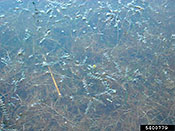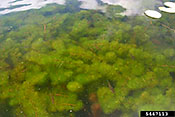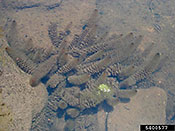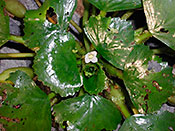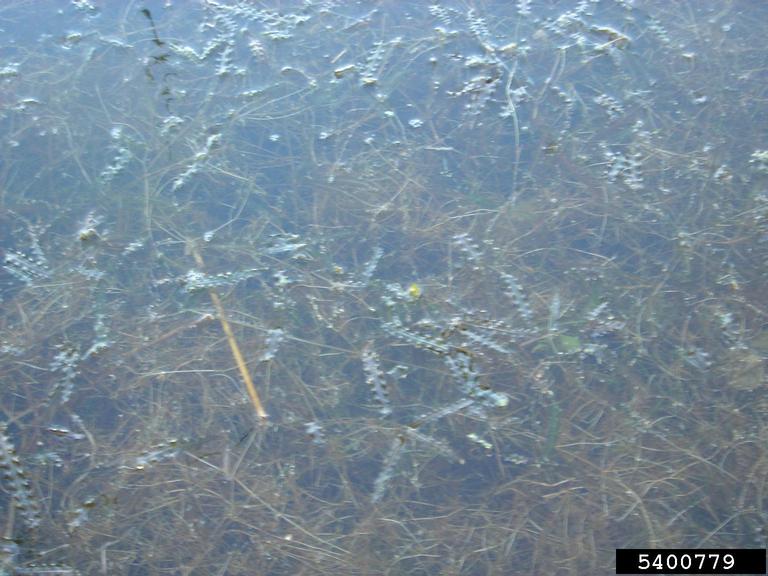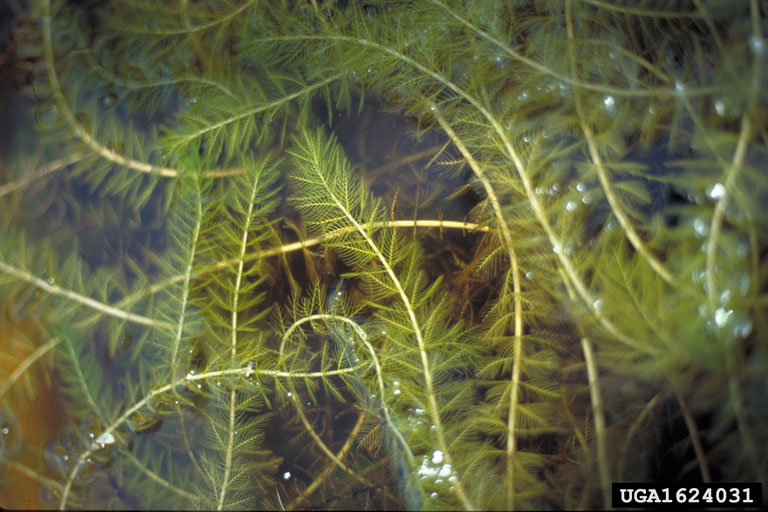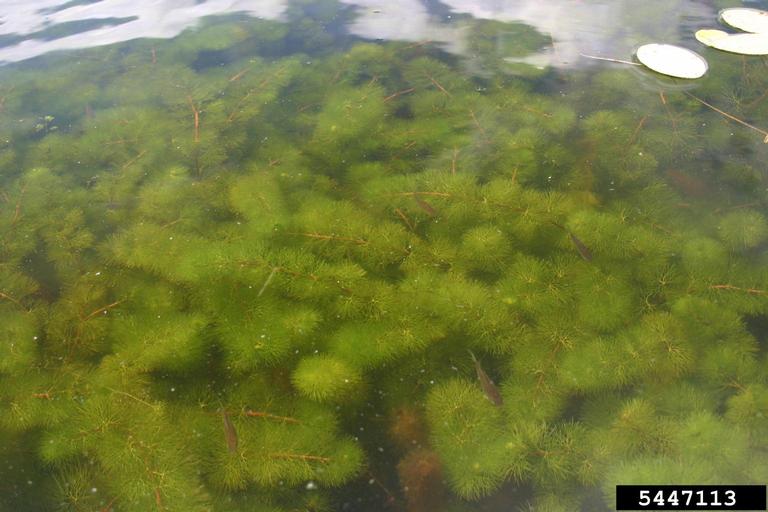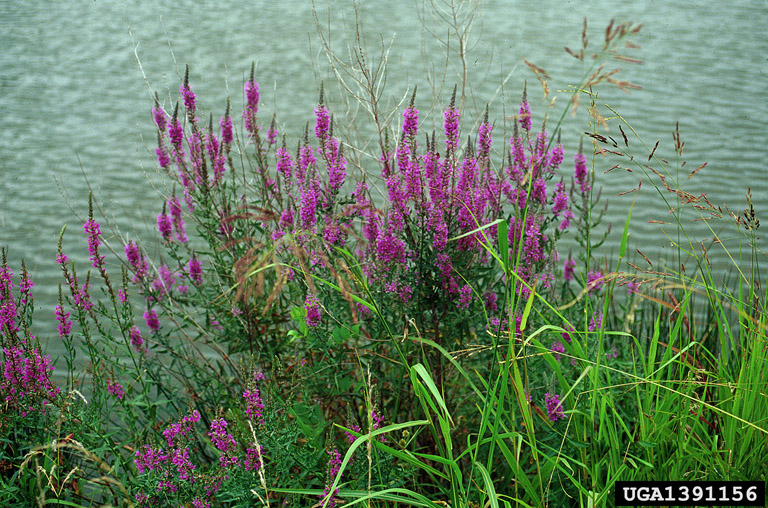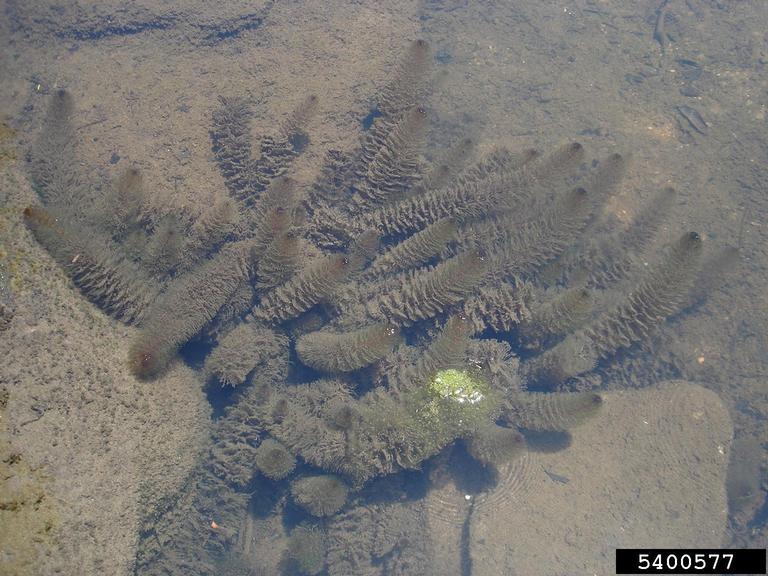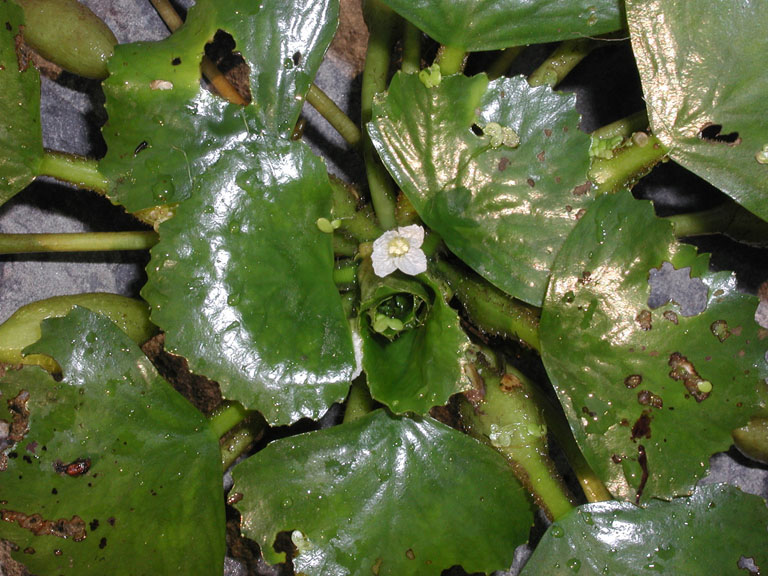NIP: No Invasive Plants
Non-native species, such as the Asian water chestnut, fanwort, and Eurasian water milfoil, grow in an uncontrolled manner and force out native plants, which in turn reduces food and habitat for native fish and wildlife. Their spread also impairs the ability of recreational paddlers to move across the waterways. When the plants in infested areas die they deplete oxygen levels and add excessive nutrients to the river water, which causes algae blooms and fish kills. However, quick detection and action can prevent these plants from spreading and doing serious harm.
The Blackstone River Watershed Association’s NIP – No Invasive Plants initiative was launched in 2010, with the assistance of a grant from the Blackstone Valley National Heritage Corridor, to combat invasive plants that threaten the health of our waterways. This program provides education, tools and assistance that helps prevent the spread of non-native plants within the Watershed. This initiative contributes to the organization’s goal to improve the water quality and aesthetics of the river systems with better plant and animal diversity, increased water flow, and expanded recreational opportunities.
Training
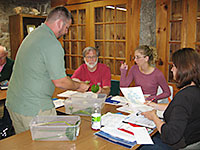
Training in invasive species
The BRWA partners with DCR’s Lakes and Ponds to provide hands-on trainings where participants can learn how to identify and proactively manage unwanted aquatic plants. Prior to attending these sessions, attendees are encouraged to survey a river or stream in their area and bring samples of plants for identification and discussion of possible management activities.
Pull the Plants Parties
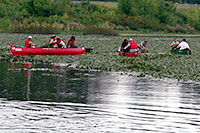
Volunteers pulling water chestnuts in Rice City Pond at a "Pull the Plant Party."
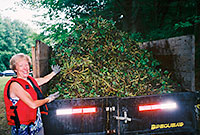
Dona Neely showing off a truckload of water chestnuts pulled out of Rice City Pond.
Another strategy the BRWA uses to fight back unwanted species, specifically the Asian water chestnut, is the Pull the Plants Party! Volunteers have reason to celebrate at the end of a “Party” when they realize the amount of unwanted plants they removed to improve the health of a water body and minimize the extent of future infestations. The first Pull the Plants Party in 2011 removed 52 cubic yards of water chestnuts from the infested Rice City Pond in Uxbridge.
The water chestnut is a rooted floating plant that has both floating and submerged leaves and wood fruit with sharp barbs. This annual plant drops seeds that sprout more plants each subsequent year. Its seeds remain viable for up to twelve years, though most germinate within two years. In addition to its reproduction, this plant is a threat because it forms dense, floating mats that prevent light from reaching other aquatic plants, which causes them to die. Plant decomposition can lower the dissolved oxygen in the water, which can lead to fish kills. The mats also impede boating, fishing and swimming.
For areas infested with water chestnuts a multiple year strategy is required because of the seeds’ viability. Sometimes a combination strategy of mechanical and hand harvesting is pursued to more aggressively remove the plants. This combination effort resulted in the removal of almost two tons of water chestnuts from a 12 acre impound on the West River above Route 16 in 2005-06, and nearly 100 tons from Rice City Pond, both in Uxbridge.
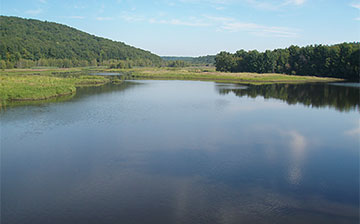
Rice City Pond after clearing with a mechanical harvester.
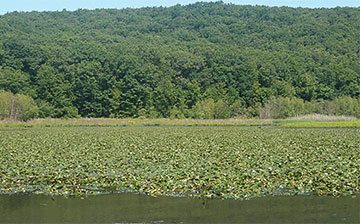
Rice City Pond before clearing with a mechanical harvester.

